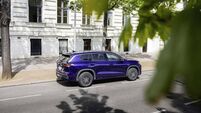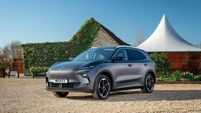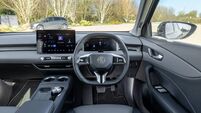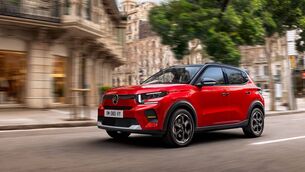MG HS PHEV review: budget SUV with big value but flawed performance
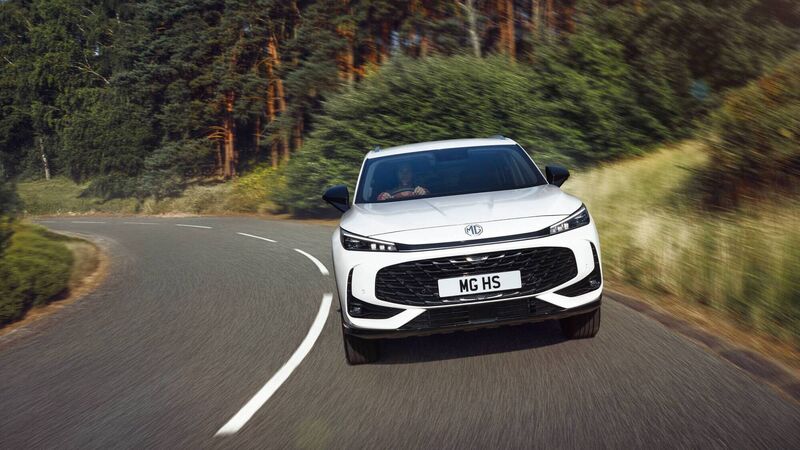
The all-new MG HS PHEV
|
MG HS PHEV |
|
|---|---|
|
|
★★★☆☆ |
|
|
from €40,995 - €43,995 as tested |
|
|
a 1.5ltr petrol paired with an electric motor for 303bhp |
|
|
truly loaded |
|
|
a big improvement on the previous generation but still lacking in several critical areas |
The pace of development in the Chinese automotive sector is in some ways hugely admirable, but in others almost frightening in its intensity and worrying for every one of its competitors in the quality it is beginning to deliver.
Undoubtedly quality is still an issue with many of the Chinese brands which have landed on our shores – many are dynamically challenged when it comes to their abilities on the road – but, as is the case with so many things these days, that does not matter. All that counts is price.
We have reviewed many products from MG in recent years and, of course, we now know that the MG cars we are seeing have absolutely nothing to do with those little British sportscars of yore that so many of us seem to forget were brilliant to look at, but appalling to drive.
No, the badge is the only thing in common between MG old and new. New MG is completely Chinese (although its design centre is in the UK). Old MG was completely British (although its design office, especially when it came to engineering the individual parts that were supposed to make it work, might as well have been in Ulan Bator).
That MG is now selling more cars than it ever did in its so-called heyday, must remain something of a sore point for all those genius heads who ran the native British industry into the ground. But, c’est la vie.
The economic muscle the Chinese have flexed into their car industries has been massive and it is beginning to pay dividends across global markets where it never previously existed. So it is with (new) MG in Europe. Often those cars are far from being the best in whatever class they compete, but they don’t cost much, so they’re flying off the forecourts.
This week’s tester is a case in point. The MG HS Hybrid is now into its second generation and it is a mid-sized SUV in the same vein as, say, the Nissan Qashqai. Look closely at the pricing of the two and you will be taken aback as the Nissan is anything between five and nine thousand Euro dearer than the Chinese car when the specifications are parallelled.
If that’s not enough to turn someone’s head, I don’t know what is. It might not matter that the two have completely different levels of ability when it comes to driving and being driven, many people will not care.
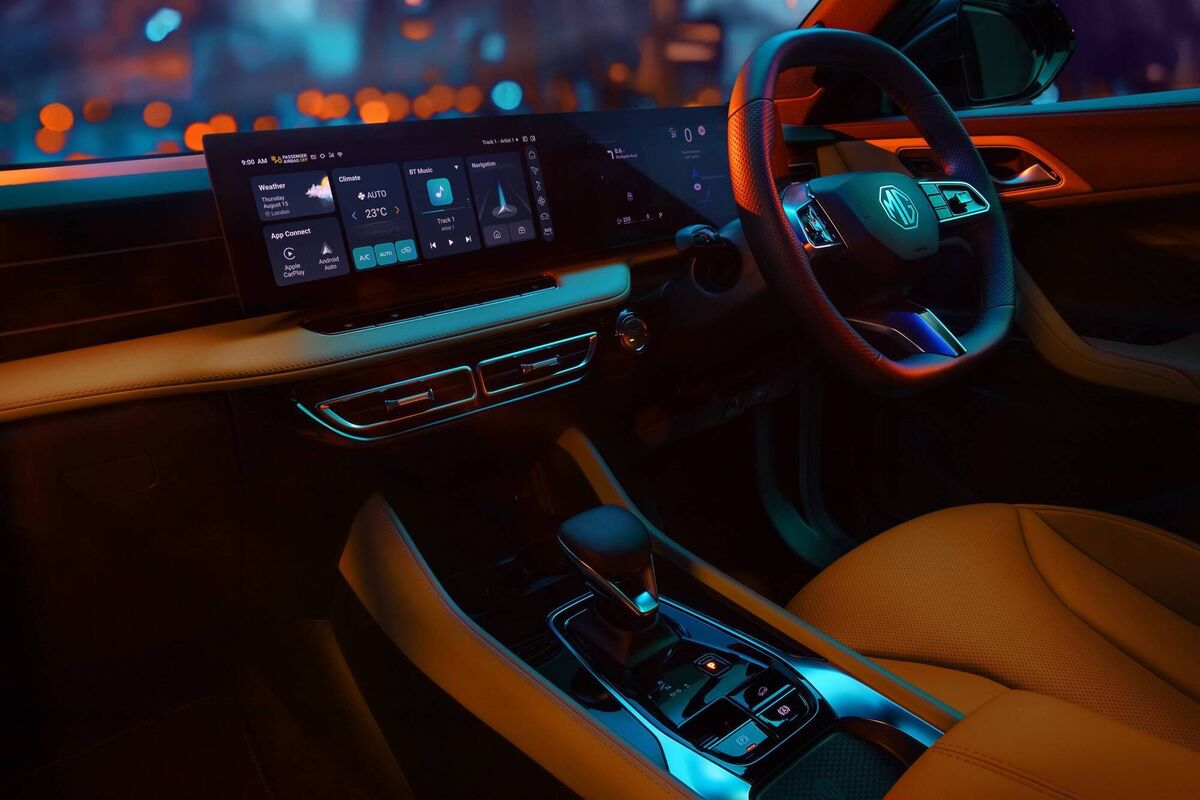
Right now MG is trailing Nissan hugely in Irish sales terms, but you can clearly see a situation where that could change radically in a short period of time – and especially so with product as aggressively priced as it is. And it won’t just be Nissan feeling the pinch.
So, what about this HS? Well. It is a fine-looking steed and one which will immediately strike a chord with anyone looking for a sharp-dressed mid-sized SUV. It is also very well specified and comes with a raft of technology as standard.
Sadly, however, that’s the majority of the good news because as soon as you’re at the helm, you realise that not everything is as hunky dory as you might imagine. Around town it is a model of decorum, but get out into the country and you will soon find it understeers like a three-legged dog.
This is a bit puzzling. Regular readers might recall our recent review of the MG Cyberster, a two-seat drop-head coupe which, while it might be a flag-bearer for the brand, is an excellent example of how to get things right. The HS is not.
It might get a lot of things right but sadly when it comes to some of the more important aspects of a car’s performance, the holes in its armour begin to appear ever more frequently.
This is actually the second-generation HS that MG has produced and, to be honest, I cannot remember having driven the first one. It preceded the Frank Keane organisation being awarded the franchise for Ireland, so I don’t believe it was even seen here.
My understanding is that the first one was not a great car and this, the second, is a huge improvement. That may be the case but, if so, it would suggest that the original was quite awful.
Undoubtedly this new one has raised MG’s game in the mid-sized family SUV segment; the car is bigger, more passenger friendly and better equipped. It’s better looking too.
The combination of these things, along with the come-hither price tag would tend to indicate that this one will be a winner with the ordinary buying public. It might not be so popular with the discerning driver, however.

We tried the PHEV version of the HS which the company is placing so much store in. This package includes a 1.5 litre petrol engine with 140 bhp, allied to a 204 bhp electric motor. The combined output is 303 bhp, but performance is still somewhat muted. 0-100 km/h takes 6.8 seconds and top speed is limited to just 164 km/h, which does not suggest it will make a decent highway companion.
A highlight is the 120 km electric-only range which is up there with the best in class, if not at the top of the class and that is something that will definitely attract a substantial cabal of drivers.
The powertrain is let down by a ditzy seven-speed auto gearbox system and the fact the factory’s claimed consumption rate is astonishingly bad, gives an indication of where we’re at here. MG says it will average some 6.9 l/100 km (which is only just about 40 mpg) and that’s pretty grim in this era.
Grim too is the handling and if you carry too much speed into any given corner, you will be faced by crippling understeer – a characteristic not at all helped by a singular lack of feedback from the steering wheel. This is where the class leaders leave it for dead. On the other hand, the ride is good, solid around town and supple even on some of our hellish B-roads.
Another truly annoying feature, however, is the driver monitoring system. If you even blink while at the wheel it will start bonging incessantly at you and trying to turn it off is going to drive you even more bonkers than you already were.
The system is cruelly invasive – although maybe the Chinese clientele are used to that – and after a while you’ll want to take a hatchet to the infotainment system.
Other than that, the interior is well laid out and decorated with high class materials, both for the upholstery and the main touch points. It’s roomy too and comfortable and the boot is quite commodious as well.
This car is an obvious example of how quickly the Chinese automotive sector is learning and catching up on its western rivals, but it is still lacking in several critical areas. It will appeal to those for whom driving dynamics are of secondary importance to the primary consideration of price. But that alone will see it sell in considerable numbers.

